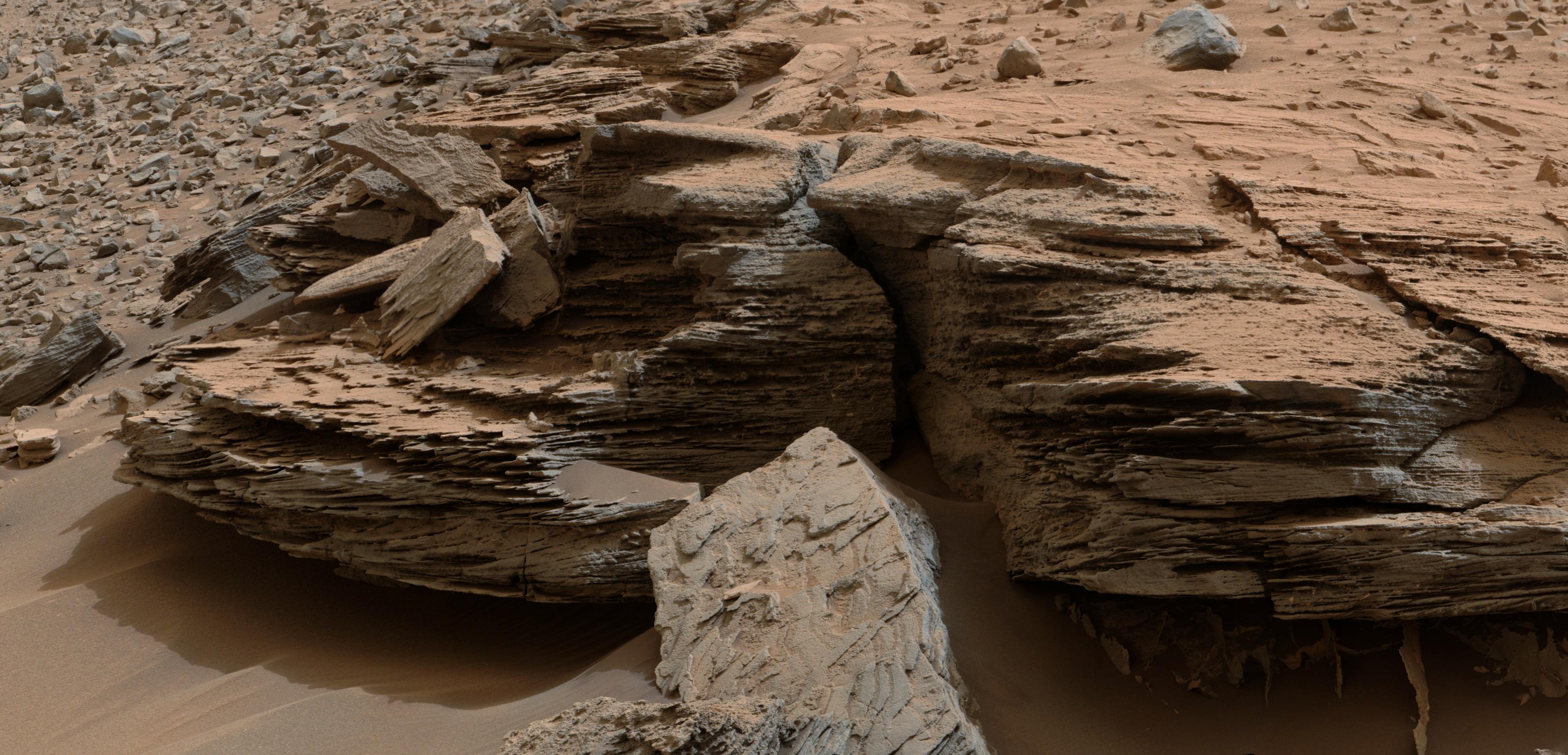
The motion of water on the bottom of an ancient Martian lake is frozen in time in a stunning new photo by NASA's Curiosity rover.
The 'Whale Rock' of Mars shows a geological phenomenon known as "cross-bedding" inside part of an outcrop at the base of Mount Sharp, a mountain that rises 3.4 miles (5.5 kilometers) into the sky from the center of Mars' huge Gale Crater.
"The cross-bedding — evident as layers at angles to each other — reflects formation and passage of waves of sand, one on top of the other. These are known as ripples, or dunes," NASA officials wrote in a description of the image, which was taken on Nov. 2 and released on Monday (Dec. 8).
"The direction of migration of these small ripples and dunes was toward the southeast. That direction is toward Mount Sharp and away from the area where Curiosity found evidence of delta deposits where a stream entered a lake," they added. "The directional flows recorded in the sediments are interpreted to have formed by currents moving down the deltas and into deeper lake water."
The ripples' direction strongly suggests that Mount Sharp did not exist — at least not in its present, towering form — when the Whale Rock sediments were laid down, Curiosity scientists said on Monday during a press conference discussing the ancient Gale Crater lake.
Water should have flowed downhill to the north, away from Mount Sharp, they noted. It's therefore likely that runoff into the lake gradually built up a giant mound, which Martian winds subsequently carved into Mount Sharp.
The car-size Curiosity rover has been exploring the 96-mile-wide (154 km) Gale Crater since touching down in August 2012. The robot spent its first year on Mars near its landing site, finding that a spot called Yellowknife Bay could have supported microbial life long ago. Curiosity departed for the foothills of Mount Sharp — the rover's ultimate science destination — in July 2013 and finished the long trek this past September.
Get the Space.com Newsletter
Breaking space news, the latest updates on rocket launches, skywatching events and more!
Follow Mike Wall on Twitter @michaeldwall and Google+. Follow us @Spacedotcom, Facebook or Google+. Originally published on Space.com.
Join our Space Forums to keep talking space on the latest missions, night sky and more! And if you have a news tip, correction or comment, let us know at: community@space.com.

Michael Wall is a Senior Space Writer with Space.com and joined the team in 2010. He primarily covers exoplanets, spaceflight and military space, but has been known to dabble in the space art beat. His book about the search for alien life, "Out There," was published on Nov. 13, 2018. Before becoming a science writer, Michael worked as a herpetologist and wildlife biologist. He has a Ph.D. in evolutionary biology from the University of Sydney, Australia, a bachelor's degree from the University of Arizona, and a graduate certificate in science writing from the University of California, Santa Cruz. To find out what his latest project is, you can follow Michael on Twitter.









